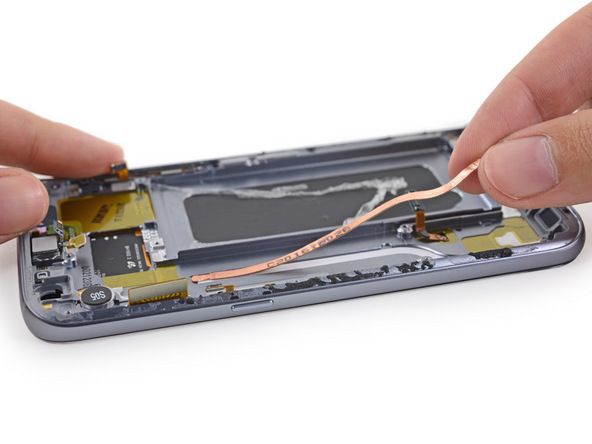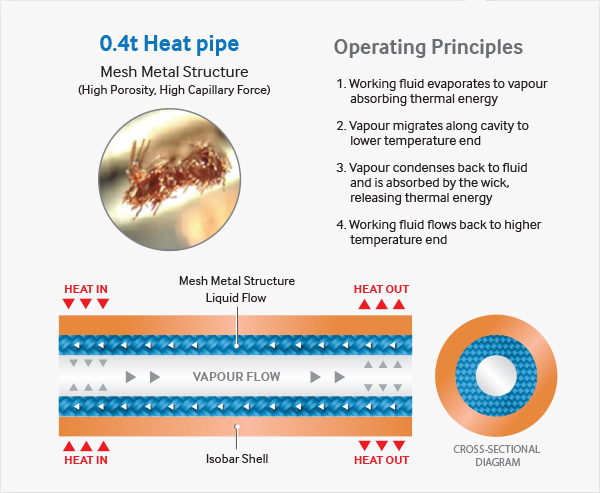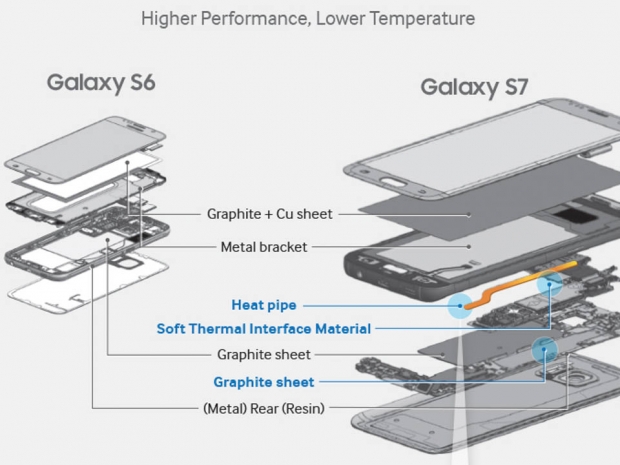
Image source: iFixit.com
Back in March, a detailed teardown of the Samsung Galaxy S7 flagship smartphone by iFixit revealed a very small but effective internal heat pipe cooling system. The component is a small twig-like piece of copper, about half a millimeter thick, which is designed to transfer heat from various hardware components onto the aluminum frame.
Samsung originally said that the heat pipe is designed to condense vapor into liquid in order to keep overall temperatures low during high-intensity usage. This includes playing full screen games, multitasking, running benchmarks, rendering active webpages and other scenarios where processor, storage or memory usage begin to peak.

Image source: Samsung
According to the company’s diagram, the heat pipe brings in warm vapor from the CPU area, which then flows towards a stack of fins down the heat pipe and is condensed back into liquid before sent back in a closed loop. The heat pipes are produced by Taiwan-based Auras Technology and Chaun Choung Technology (CCI).
Component will ship in February
While the Galaxy S8 was originally going to have a dual ultra-thin heat pipe design, the company decided against it for unknown reasons but will be sticking with the same supplier. Mass shipments of the component are expected to begin in February.
LG also says it will use a similar ultra-thin heat pipe design in the upcoming LG G6, a flagship smartphone that will be announced next month at Mobile World Congress. HTC’s upcoming Desire 10 is also expected to use a similar heat pipe design from a different manufacturer.




